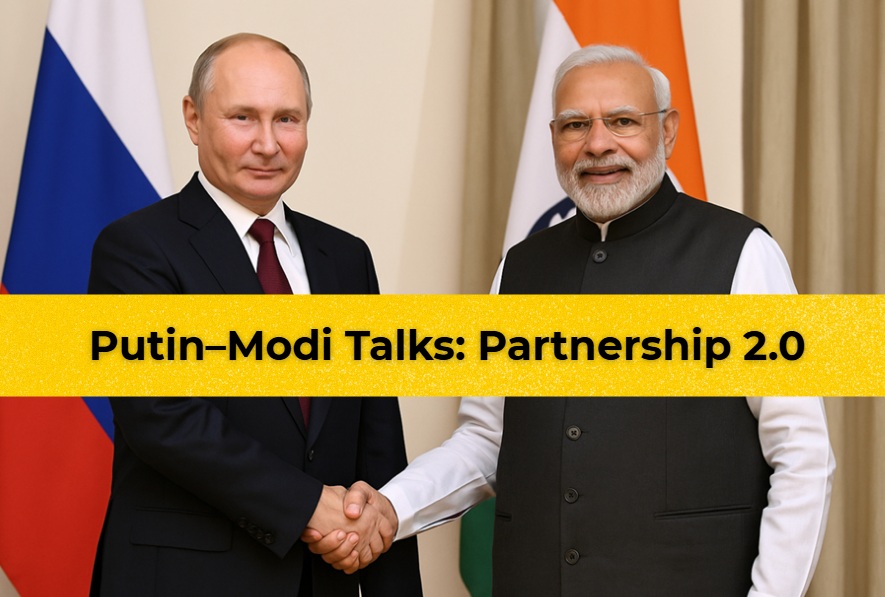PM Modi’s Navratri letter and GST reform bring tax relief, boost markets, and stir political ripples ahead of state elections. A festive masterstroke.
On the first day of Navratri, Prime Minister Narendra Modi addressed the nation through an open letter, extending festive greetings and expressing his hope that the season would usher in prosperity and happiness for all. Alongside his wishes, the Prime Minister highlighted what he termed a “GST Savings Festival”—a major tax reform effective from September 22.
A Historic Overhaul of GST
Until now, the Goods and Services Tax (GST) system in India operated under four primary slabs: 5%, 12%, 18%, and 28%. Under the new framework, these have been streamlined into just two: 5% and 18%, with some essential items now completely tax-free. Luxury and “sin” goods, however, will attract a 40% tax.
This rationalization has been welcomed by traders, industry leaders, and the middle class alike. The move, coming during the festive season, promises substantial relief for consumers—be it reduced costs of two-wheelers, cars, or daily essentials. For many, this translates into immediate savings of thousands of rupees at a time when household expenses typically surge.
Public Cheer, Political Dissent
While the market response has been overwhelmingly positive, the political narrative remains divided. The Congress Party has criticized the move, claiming that the Modi government delayed reforms and is now repackaging them as a festive gift. Some opposition leaders have also argued that the decision was influenced by global tariff pressures, particularly those imposed by the U.S.
Yet, the atmosphere on the ground tells a different story. Reports from across states suggest a surge in consumer enthusiasm, bustling markets, and renewed optimism among small traders and manufacturers. Many see the reform as a bold step that dismantles the “Gabbar Singh Tax” tag once attached to GST by Rahul Gandhi.
Political Calculations Ahead of State Elections
The timing of the decision is crucial. With elections around the corner in Bihar, West Bengal, and Assam, the GST cuts are expected to generate significant political dividends for the Bharatiya Janata Party (BJP) and its allies. In Bihar, where consumer sentiment plays a key role, reduced prices on essential goods and vehicles are already being seen as a “Diwali gift” to the electorate.
Analysts argue that the reform strengthens the BJP’s traditional middle-class and lower-middle-class base, countering long-standing opposition claims that Modi’s policies primarily serve big corporates.
Economic Implications Beyond Politics
Beyond electoral arithmetic, the economic logic of the reform is equally compelling. By reducing tax rates, the government expects:
Higher consumption: Cheaper goods are likely to draw more buyers.
Boosted manufacturing: Increased demand will drive higher production.
Job creation: Expanded production capacity will generate employment.
Higher revenue: Lower rates, paradoxically, could lead to greater GST collections through higher volumes.
The government also sees this as a signal to global investors. At a time when many economies are struggling with inflation and stagnation, India’s pro-consumer reforms project an image of resilience and opportunity.
Symbolism in Timing
The announcement on Navratri was no accident. The festival season, stretching through Dussehra, Diwali, and Chhath Puja, represents the peak of consumer spending in India. By aligning the reform with this period, the government has ensured maximum visibility and immediate impact.
Opposition on the Back Foot
The opposition’s criticism—that the reform is politically timed—has found little traction among ordinary citizens who are seeing tangible benefits. As one observer quipped, “If this is cheating, then people would happily want to be cheated again and again.”
Conclusion: More Than Just a Tax Reform
The GST restructuring is more than a fiscal adjustment—it is a statement of intent. For the Modi government, it combines economic pragmatism with political strategy, delivering relief to citizens while strengthening its electoral base.
As festive lights brighten markets across India, the reform underscores the “development-first” narrative of the Modi administration, while leaving the opposition struggling to counter the public mood.
In essence, the GST reform is not only a festival gift for consumers but also a strategic masterstroke that could shape both India’s economic trajectory and its political landscape in the months ahead.
#BachatUtsav, #PMModi, #rahulgandhi, #pmmodilettertonation, #gst2025, #BJPGSTbachatutsav, #biharelectiondates, #electioncommission, #dailydozes, #Modi, #Navratri, #GSTReform, #GSTSavingsFestival, #ModiGovernment, #TaxRelief, #MiddleClassRelief, #EconomicReform, #PoliticalImpact, #BJPEconomy, #IndiaGrowth, #GSTCuts, #FestiveSeason, #GSTOverhaul, #ModiMasterstroke, #IndianEconomy, #ModiNews, #BiharElections, #BengalElections, #AssamElections,





